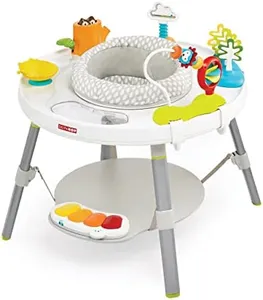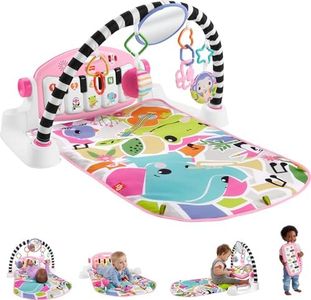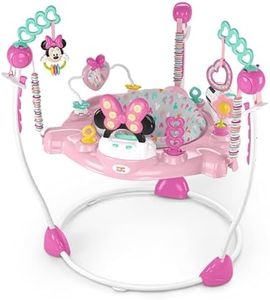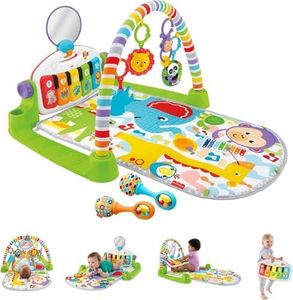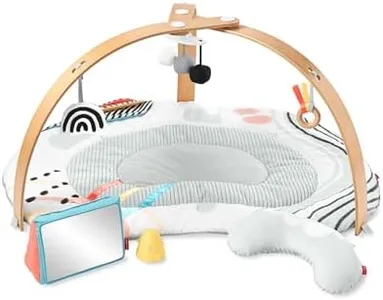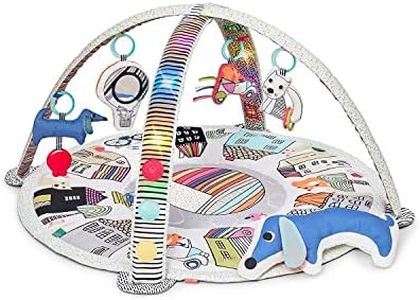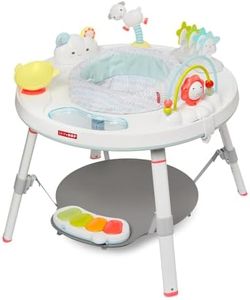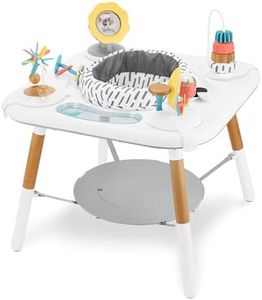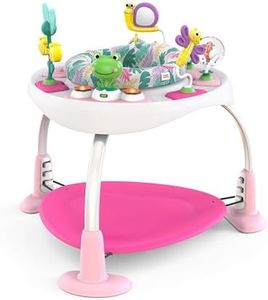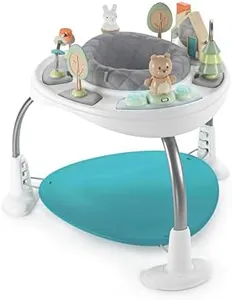We Use CookiesWe use cookies to enhance the security, performance,
functionality and for analytical and promotional activities. By continuing to browse this site you
are agreeing to our privacy policy
10 Best Baby Activity Centers
From leading brands and best sellers available on the web.Buying Guide for the Best Baby Activity Centers
Choosing a baby activity center can be really helpful in keeping your little one engaged, stimulated, and safe as they play and explore. The right activity center provides entertainment, helps with early development skills—such as motor skills, hand-eye coordination, and sensory awareness—and gives parents some hands-free moments. When picking the best one for your baby, you'll want to consider a few key features that will make the experience both fun and safe for your child, while fitting well with your living space and baby's age or developmental stage.Age and Weight LimitThis refers to the minimum and maximum baby age or weight the activity center is designed to support. It's important because using an activity center outside the recommended age or weight range could be unsafe or uncomfortable for your baby. Typically, age starts around 4-6 months when babies can hold their head up, and continues until about 12-18 months, or up to a specified weight limit. If your baby is closer to the lower end (just starting to hold their head), look for centers with strong support and lower seat heights. For older or heavier babies, make sure the center can accommodate their growth both in size and weight. Always match your baby's stage to the product's guidelines for the safest experience.
Type (Stationary vs. Activity Walker)There are generally two types of baby activity centers: stationary centers, which stay in one spot, and activity walkers, which allow movement around the room. Stationary centers are best for younger babies who aren't mobile yet since they focus more on play and less on movement. Activity walkers let older babies move and explore, but may require a safer, open play area and closer supervision. Choose a stationary center if your baby is still building strength or if you want a safe, contained play spot. Opt for a walker once your baby is standing and ready to explore with support.
Height AdjustabilitySome centers have adjustable height settings, allowing you to change the seat's level as your baby grows. This matters because it keeps your baby's feet flat on the floor or just touching, which is important for healthy hip and leg development. Centers with more height options will last longer as your child grows. If your baby is growing fast or you're hoping for longer use, make sure the center offers multiple height settings and is easy to adjust.
Seat Rotation and SupportMany centers have seats that swivel 360 degrees, letting babies turn and reach different toys easily. Good seat support provides comfort and helps babies practice turning and bouncing. A well-padded, sturdy seat also supports developing muscles and posture. If your baby likes moving and looking around, a rotating seat will let them explore without frustration. Always check for strong, machine-washable fabric and a seat that provides good back and side support.
Toy Variety and Developmental ActivitiesActivity centers come with a range of attached toys or activities, such as mirrors, rattles, music, lights, and textured objects. These features stimulate senses and help with skill development. Some are focused on fine motor skills (grabbing, spinning), while others target sensory or cognitive growth. Think about what kind of activities your baby enjoys and look for centers that match those interests. If you want all-around development, choose one with a balance of activities for hands, eyes, and ears.
Ease of CleaningBabies are messy! Look for an activity center with removable, washable seat pads and wipe-clean surfaces. This spec is important because it saves you time and keeps things hygienic. If you want easy day-to-day cleaning, look for simple designs with fewer fabric folds or cracks where food and drool can get stuck. Centers with machine-washable parts are especially handy if your baby spits up or snacks while playing.
Portability and StorageSome activity centers fold down for easy storage or travel. This matters if you have limited space or want to bring the center to grandparents’ homes or on trips. If you plan to move it often, lightweight construction and a folding mechanism will be important. For homes with lots of space or a dedicated play area, portability may be less important. Choose based on where you'll use and store the center most.
Safety FeaturesFeatures like a wide, stable base, non-slip feet, and sturdy construction keep the activity center from tipping or sliding as the baby moves. Safety certifications or standards compliance (like meeting ASTM or JPMA requirements) can provide reassurance. This spec is always important regardless of baby’s age, so always check for sturdy build, secure seat attachment, no sharp edges, and strong joints before buying.

